2016 Rio de Janeiro Olympic GamesSep 30, 2015 by Rebecca Johnson
2016 Foresight: Will The Juniors Reach Rio?
2016 Foresight: Will The Juniors Reach Rio?
With 2016 just around the corner, more and more speculation is being drawn as to who will represent the USA in Rio. While most of the focus has been on two-
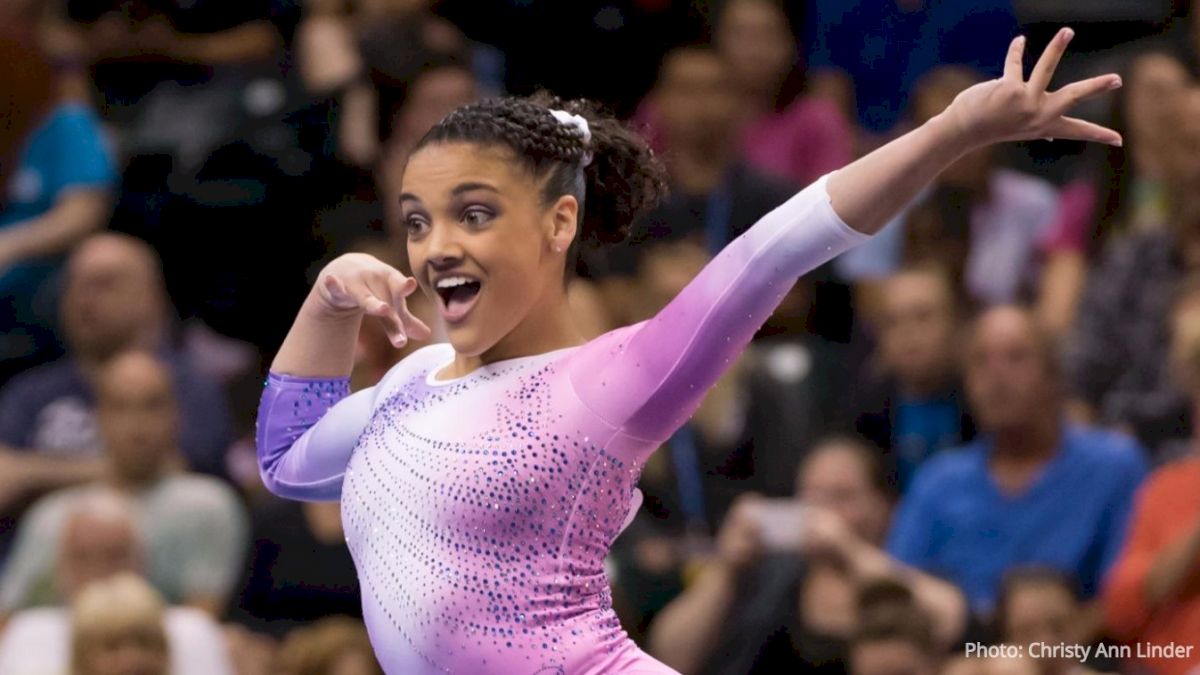
With 2016 just around the corner, more and more speculation is being drawn as to who will represent the USA in Rio. While most of the focus has been on two-time reigning World Champion Simone Biles, returning Olympians Gabby Douglas and Aly Raisman, and other top seniors, there are a few gymnasts making a splash in the junior division who deserve to be in the mix of true Rio contenders.
Laurie Hernandez, Jazmyn Foberg, and Ragan Smith will all turn 16 next year, making them eligible for the Olympic team. While they have have had great success in the junior ranks, jumping into the senior division on an Olympic year surely presents a challenge. Undeniably, these gymnasts will not have the level of international experience as their senior teammates, but arguably the bigger difference between the juniors and seniors lies in the level of difficulty they perform. The current code rewards difficulty more than ever before, and in order to have a shot, these juniors will have to show that their D-scores can stand up to the seniors' come 2016.
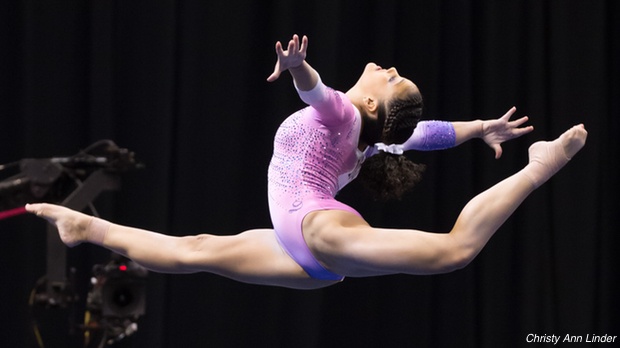
So the big question is, can they do it? Can they make enough strides with their D-scores in the coming year to give themselves a shot at Rio? History can provide very interesting insight here.
We've taken five prominent juniors from the past two quads, who also became seniors the year of the Olympics, to see how they were able to increase their difficulty during this time period. Note: This does not include every gymnast that fell into this age range, but are the five from each period we felt had the best chance of making their respective Olympic team.
** All averages were taken using an average of the gymnasts' D-score from U.S. Classics and U.S. Championships (day 1 and 2) during the given year.
Juniors in 2007 who turned Senior in 2008:
Mattie Larson, Olivia Courtney, Mackenzie Caquatto, Ashley Stott, Corrie Lothrop
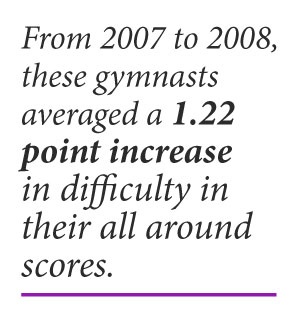 From 2007 to 2008, these gymnasts averaged a 1.22 point increase in difficulty in their all around scores. Very respectable, however none of them made the team. In fact, the average of these gymnasts' D-scores in 2008 came in almost two points below the average D-score of those who made the Olympic team.
From 2007 to 2008, these gymnasts averaged a 1.22 point increase in difficulty in their all around scores. Very respectable, however none of them made the team. In fact, the average of these gymnasts' D-scores in 2008 came in almost two points below the average D-score of those who made the Olympic team.
Granted, the 2008 team was one made up of World Champions and experienced vets. Nastia Liukin, Alicia Sacramone and Chellsie Memmel all had three World Championships under their belts by the time 2008 came around. Furthermore, five out of the six qualifiers were
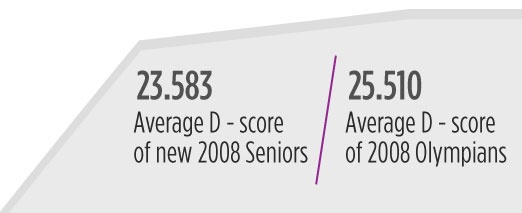 part of or alternates to the gold medal winning team at the 2007 World Championships. These juniors had a tough battle to climb, and in the end could not match the difficulty, or experience, of those that made the U.S. team.
part of or alternates to the gold medal winning team at the 2007 World Championships. These juniors had a tough battle to climb, and in the end could not match the difficulty, or experience, of those that made the U.S. team.
Moving on to 2011, where the challenge to make make the Olympic team was greater than ever before. U.S. gymnastics was again, atop the podium at the 2011 World Championships, but now only five could make the cut.
Juniors in 2011 who turned Senior in 2012:
Kyla Ross, Sarah Finnegan, Elizabeth Price, Kennedy Baker, Brenna Dowell
These five juniors averaged an increase of about 6 tenths between 2011 and 2012, but was still over a point short of the average difficulty of the 2012 Olympians.
Sarah Finnegan lead the pack, adding over a point onto her all-around D-score, and ultimately earned an alternate spot on the team. However, Kyla Ross was the main story.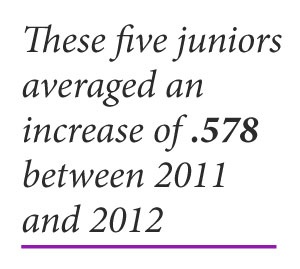
Kyla made the transition from junior to senior in an Olympic year, then was selected torepresent the U.S. in London. Furthermore, she accomplished this despite decreasing her D-score from 2011 to 2012. Not by much, but Kyla's difficulty in the all around dropped just over a half tenth between during that timeframe. So how did she make the team?
Lucky for Kyla both her strengths and USA's weaknesses happened to match up. With the overload of talent on the power events, it was highly unlikely Kyla would ever compete on vault or floor in a team final. Because of this, she cut her Amanar, and downgraded on floor allowing her to focus on her forté--bars and beam.
She added four tenths of difficulty to her bar set, making her start value the second highest on the Olympic team. Difficulty was not the only thing that helped Kyla breakthrough into
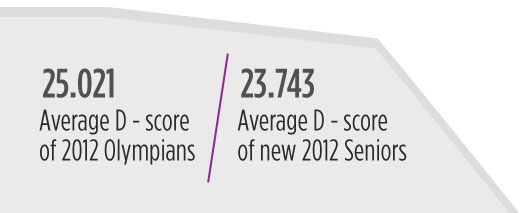 the senior pack, her lines were impeccable and her consistency unmatched, but it played a significant part. So although she didn't make a huge jump in her all around D-score, she made it where it counted, and became just what the U.S. team needed come time for London.
the senior pack, her lines were impeccable and her consistency unmatched, but it played a significant part. So although she didn't make a huge jump in her all around D-score, she made it where it counted, and became just what the U.S. team needed come time for London.
If history repeats itself, we can expect these juniors to add around .5-1 point to their D-score between now and next summer. The 1.27 average increase from the 2007 Juniors is less realistic given the current code. Keep in mind, in 2008 all of the bar finalists in Beijing had greater than 7 points in difficulty, which is completely unheard of now. Furthermore, since that time, the Amanar has been devalued from a 6.5 to a 6.3.
But, would gaining between a half and full point in all around difficulty be enough to match the gymnasts currently leading the U.S. senior team? Not quite. The top five finishers in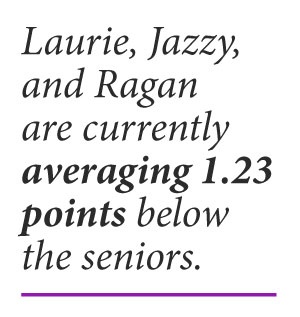 both this year's Secret U.S. Classic and P&G Championships--Simone Biles, Aly Raisman, Bailie Key, Gabby Douglas, and Maggie Nichols--average 24.83 points in difficulty. This is also without the expected upgrades from Gabby and Bailie on vault, who will likely perform Amanars in 2016. Meanwhile, Laurie, Jazzy, and Ragan are currently averaging 1.23 points below the seniors, with 23.6 as their combined average D-score.
both this year's Secret U.S. Classic and P&G Championships--Simone Biles, Aly Raisman, Bailie Key, Gabby Douglas, and Maggie Nichols--average 24.83 points in difficulty. This is also without the expected upgrades from Gabby and Bailie on vault, who will likely perform Amanars in 2016. Meanwhile, Laurie, Jazzy, and Ragan are currently averaging 1.23 points below the seniors, with 23.6 as their combined average D-score.
Does this mean they don't make the team? Of course not. It's gymnastics--anything can happen. But that doesn't mean it won't be a challenge.
For Ragan, the Kyla Ross approach is best. She is incredible on beam and floor, and her performance on these events would be what earns her a spot on the team. That is not to say she should discount the other two events completely--we know a five person team leaves little room for event specialists unable to jump in if necessary--but bars and vault should not be her main focus when it comes to improving difficulty. Adding a few tenths on beam and floor would put her right in the mix to be considered in a three-up-three-count situation, which is exactly where she needs to be to have a shot at Rio.
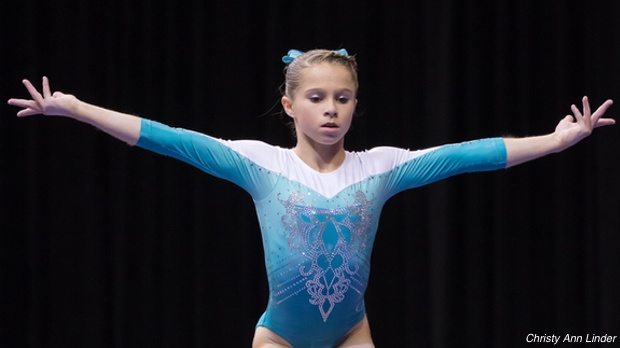
Laurie and Jazzy are in a bit of a different situation. They are strong and consistent across the board, rather than stellar on one or two events. For them, a few tenths here and there on each event will go a long way.
On vault, the Amanar has become the American standard. If Laurie and Jazzy can upgrade from the Yurckenko double, this makes them instantly more valuable. While it is still a year away, with a lot of time for development, there are not three obvious vaulters among the current U.S. seniors. There is most notably Simone, and MyKayla Skinner could be argued as an event specialist, but Aly's Amanar is not always in line, there is no guarantee Gabby's will come back exactly as it was before, and Maggie's is still fairly new and will need to continue to improve. At this point in time, Laurie and Jazzy have a chance to add themselves into the mix on vault. Slight alterations can create bonus through connections on the other three events. This, along with a new skill or two, could be what moves them to the next level.
So, what do you think? Can the juniors take Rio?
Related:
Beyond the Routine: Laurie Hernandez
Beyond the Routine: Texas Dreams - Young and Famous
Beyond the Routine: Jazzy
Olympic Team Forecast: Why Worlds Is Huge
Laurie And Jazzy Go One-Two At Junior Japan International
Hernandez Grabs Two Golds In Event Finals At Junior Japan International
Laurie Hernandez, Jazmyn Foberg, and Ragan Smith will all turn 16 next year, making them eligible for the Olympic team. While they have have had great success in the junior ranks, jumping into the senior division on an Olympic year surely presents a challenge. Undeniably, these gymnasts will not have the level of international experience as their senior teammates, but arguably the bigger difference between the juniors and seniors lies in the level of difficulty they perform. The current code rewards difficulty more than ever before, and in order to have a shot, these juniors will have to show that their D-scores can stand up to the seniors' come 2016.

So the big question is, can they do it? Can they make enough strides with their D-scores in the coming year to give themselves a shot at Rio? History can provide very interesting insight here.
We've taken five prominent juniors from the past two quads, who also became seniors the year of the Olympics, to see how they were able to increase their difficulty during this time period. Note: This does not include every gymnast that fell into this age range, but are the five from each period we felt had the best chance of making their respective Olympic team.
** All averages were taken using an average of the gymnasts' D-score from U.S. Classics and U.S. Championships (day 1 and 2) during the given year.
Let's look at the rundown:
Juniors in 2007 who turned Senior in 2008:
Mattie Larson, Olivia Courtney, Mackenzie Caquatto, Ashley Stott, Corrie Lothrop
 From 2007 to 2008, these gymnasts averaged a 1.22 point increase in difficulty in their all around scores. Very respectable, however none of them made the team. In fact, the average of these gymnasts' D-scores in 2008 came in almost two points below the average D-score of those who made the Olympic team.
From 2007 to 2008, these gymnasts averaged a 1.22 point increase in difficulty in their all around scores. Very respectable, however none of them made the team. In fact, the average of these gymnasts' D-scores in 2008 came in almost two points below the average D-score of those who made the Olympic team. Granted, the 2008 team was one made up of World Champions and experienced vets. Nastia Liukin, Alicia Sacramone and Chellsie Memmel all had three World Championships under their belts by the time 2008 came around. Furthermore, five out of the six qualifiers were
 part of or alternates to the gold medal winning team at the 2007 World Championships. These juniors had a tough battle to climb, and in the end could not match the difficulty, or experience, of those that made the U.S. team.
part of or alternates to the gold medal winning team at the 2007 World Championships. These juniors had a tough battle to climb, and in the end could not match the difficulty, or experience, of those that made the U.S. team. Moving on to 2011, where the challenge to make make the Olympic team was greater than ever before. U.S. gymnastics was again, atop the podium at the 2011 World Championships, but now only five could make the cut.
Juniors in 2011 who turned Senior in 2012:
Kyla Ross, Sarah Finnegan, Elizabeth Price, Kennedy Baker, Brenna Dowell
These five juniors averaged an increase of about 6 tenths between 2011 and 2012, but was still over a point short of the average difficulty of the 2012 Olympians.
Sarah Finnegan lead the pack, adding over a point onto her all-around D-score, and ultimately earned an alternate spot on the team. However, Kyla Ross was the main story.

Kyla made the transition from junior to senior in an Olympic year, then was selected torepresent the U.S. in London. Furthermore, she accomplished this despite decreasing her D-score from 2011 to 2012. Not by much, but Kyla's difficulty in the all around dropped just over a half tenth between during that timeframe. So how did she make the team?
Lucky for Kyla both her strengths and USA's weaknesses happened to match up. With the overload of talent on the power events, it was highly unlikely Kyla would ever compete on vault or floor in a team final. Because of this, she cut her Amanar, and downgraded on floor allowing her to focus on her forté--bars and beam.
She added four tenths of difficulty to her bar set, making her start value the second highest on the Olympic team. Difficulty was not the only thing that helped Kyla breakthrough into
 the senior pack, her lines were impeccable and her consistency unmatched, but it played a significant part. So although she didn't make a huge jump in her all around D-score, she made it where it counted, and became just what the U.S. team needed come time for London.
the senior pack, her lines were impeccable and her consistency unmatched, but it played a significant part. So although she didn't make a huge jump in her all around D-score, she made it where it counted, and became just what the U.S. team needed come time for London. Overall conclusions:
If history repeats itself, we can expect these juniors to add around .5-1 point to their D-score between now and next summer. The 1.27 average increase from the 2007 Juniors is less realistic given the current code. Keep in mind, in 2008 all of the bar finalists in Beijing had greater than 7 points in difficulty, which is completely unheard of now. Furthermore, since that time, the Amanar has been devalued from a 6.5 to a 6.3.
But, would gaining between a half and full point in all around difficulty be enough to match the gymnasts currently leading the U.S. senior team? Not quite. The top five finishers in
 both this year's Secret U.S. Classic and P&G Championships--Simone Biles, Aly Raisman, Bailie Key, Gabby Douglas, and Maggie Nichols--average 24.83 points in difficulty. This is also without the expected upgrades from Gabby and Bailie on vault, who will likely perform Amanars in 2016. Meanwhile, Laurie, Jazzy, and Ragan are currently averaging 1.23 points below the seniors, with 23.6 as their combined average D-score.
both this year's Secret U.S. Classic and P&G Championships--Simone Biles, Aly Raisman, Bailie Key, Gabby Douglas, and Maggie Nichols--average 24.83 points in difficulty. This is also without the expected upgrades from Gabby and Bailie on vault, who will likely perform Amanars in 2016. Meanwhile, Laurie, Jazzy, and Ragan are currently averaging 1.23 points below the seniors, with 23.6 as their combined average D-score.Does this mean they don't make the team? Of course not. It's gymnastics--anything can happen. But that doesn't mean it won't be a challenge.
So how do they do it?
For Ragan, the Kyla Ross approach is best. She is incredible on beam and floor, and her performance on these events would be what earns her a spot on the team. That is not to say she should discount the other two events completely--we know a five person team leaves little room for event specialists unable to jump in if necessary--but bars and vault should not be her main focus when it comes to improving difficulty. Adding a few tenths on beam and floor would put her right in the mix to be considered in a three-up-three-count situation, which is exactly where she needs to be to have a shot at Rio.

Laurie and Jazzy are in a bit of a different situation. They are strong and consistent across the board, rather than stellar on one or two events. For them, a few tenths here and there on each event will go a long way.
On vault, the Amanar has become the American standard. If Laurie and Jazzy can upgrade from the Yurckenko double, this makes them instantly more valuable. While it is still a year away, with a lot of time for development, there are not three obvious vaulters among the current U.S. seniors. There is most notably Simone, and MyKayla Skinner could be argued as an event specialist, but Aly's Amanar is not always in line, there is no guarantee Gabby's will come back exactly as it was before, and Maggie's is still fairly new and will need to continue to improve. At this point in time, Laurie and Jazzy have a chance to add themselves into the mix on vault. Slight alterations can create bonus through connections on the other three events. This, along with a new skill or two, could be what moves them to the next level.
So, what do you think? Can the juniors take Rio?
Related:
Beyond the Routine: Laurie Hernandez
Beyond the Routine: Texas Dreams - Young and Famous
Beyond the Routine: Jazzy
Olympic Team Forecast: Why Worlds Is Huge
Laurie And Jazzy Go One-Two At Junior Japan International
Hernandez Grabs Two Golds In Event Finals At Junior Japan International